#Late Bronze Age
Text
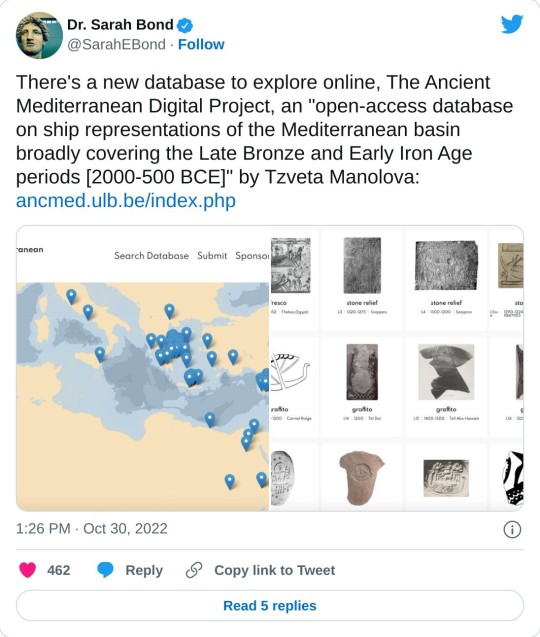
#tagamemnon#bit ill so lazily scrolling thru twt pt 2#ancient greece#ancient rome#late bronze age#early iron age#resources
1K notes
·
View notes
Text


Figurine of the Egyptian goddess Hathor, a symbol of fertility, power, protection, and wisdom is typical to the Canaanite culture, especially during the Late Bronze Age; now in the hands of Israel Antiquities Authority

A few weeks ago, while walking along the beach, she noticed something washed ashore. "It was a rather stormy day, the waves were high. During the walk near the water, I noticed a stone coming towards me.
"I called my husband immediately and told him - this is not just an ordinary stone, I felt there was something beyond a regular rock here.'" Lydia photographed the stone and immediately consulted her acquaintances who are knowledgeable in the subject. They advised her to have the stone examined by professionals. She turned to the Antiquities Authority via Facebook, and representatives from the authority arrived to collect the special statuette together with her.
More here: Source
19 notes
·
View notes
Photo

Terracotta “phi” figurine
Greek (from the Peloponnesus), Mycenaean Period, 1400-1200 B.C.
Saint Louis Art Museum
#ceramics#terracotta#Ancient Greece#Mycenaean Greece#Mycenaean Period#ancient art#figurine#phi figurine#Greek#Mycenaean#Peloponnesus#SLAM#Saint Louis Art Museum#archaeology#Bronze Age#Late Bronze Age
41 notes
·
View notes
Text
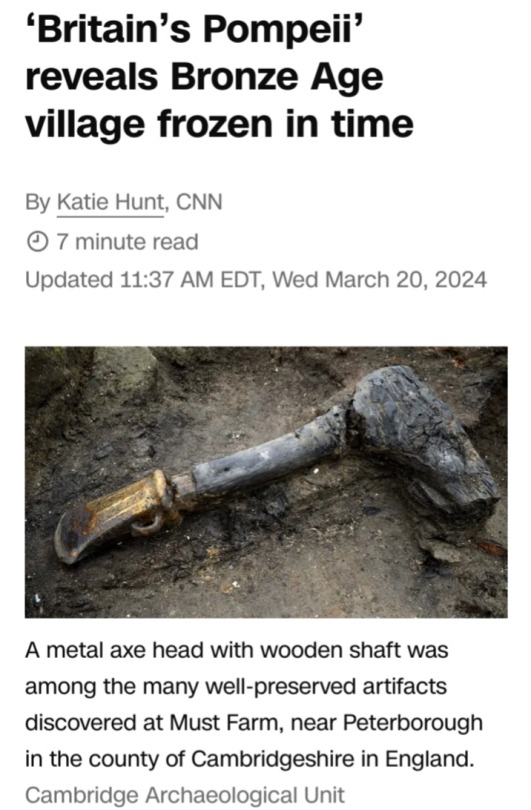
(CNN) — It’s late summer 2,850 years ago. A fire engulfs a stilt village perched above a boggy, slow-moving river that weaves though the wetlands of eastern England.
The tightly packed roundhouses, built from wood, straw, turf, and clay just nine months earlier, go up in flames.
The inhabitants flee, leaving behind all their belongings, including a wooden spoon in a bowl of half-eaten porridge.
There is no time to rescue the fattened lambs, which are trapped and burnt alive.
The scene is a vivid and poignant snapshot, captured by archaeologists, of a once thriving community in late Bronze Age Britain known as Must Farm, near what’s now the town of Peterborough.
The research team published a two-volume monograph on Wednesday that describes their painstaking $1.4 million (£1.1 million) excavation and analysis of the site in the county of Cambridgeshire.
Described by the experts involved as an “archaeological nirvana,” the site is the only one in Britain that lives up to the “Pompeii premise,” they say, referencing the city forever frozen in time by the eruption of Mount Vesuvius in AD 79 that has yielded unparalleled information about ancient Rome.
“In a typical Bronze Age site, if you’ve got a house, you’ve probably got maybe a dozen post holes in the ground and they’re just dark shadows of where it once stood.
If you’re really lucky, you’ll get a couple of shards of pottery, maybe a pit with a bunch of animal bones.
This was the complete opposite of that process. It was just incredible,” said Chris Wakefield of the Cambridge Archaeological Unit at the University of Cambridge, an archaeologist and member of the 55-person team that excavated the site in 2016.
"All the axe marks had been used to shape and sculpt the wood. All of those looked fresh, like they could have been done last week by someone,” Wakefield added.
The remarkably preserved condition of the site and its contents enabled the archaeological team to draw comprehensive new insights into Bronze Age society — findings that could overturn the current understanding of what everyday life was like in Britain during the ninth century BC.

Must Farm domesticity — and a mystery
The site, which dates to eight centuries before Romans arrived in Britain, revealed four roundhouses and a square entranceway structure, which stood approximately 6.5 feet (2 meters) above the riverbed and were surrounded by a 6.5-foot (2-meter) fence of sharpened posts.
The archaeologists believe the settlement was likely twice as big. However, quarrying in the 20th century destroyed any other remains.
Though charred from the fire, the remaining buildings and their contents were extremely well preserved by the oxygen-starved conditions of the fens, or wetlands, and included many wooden and textile items that rarely survive in the archaeological record.
Together, traces of the settlement paint a picture of cozy domesticity and relative plenty.
The researchers unearthed 128 ceramic artifacts — jars, bowls, cups and cookware — and were able to deduce that 64 pots were in use at the time of fire.
The team found some stored pots neatly nested.
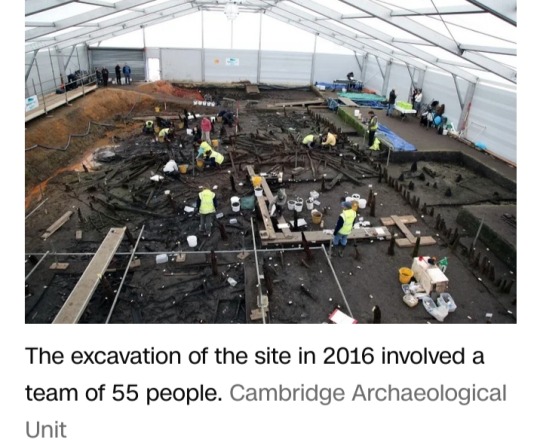
Textiles found at the site made from flax linen had a soft, velvety feel with neat seams and hems, although it wasn’t possible to identify individual pieces of clothing.
Wooden artifacts included boxes and bowls carved from willow, alder and maple, 40 bobbins, many with threads still attached, various tools, and 15 wooden buckets.
“One of those buckets … on the bottom of it were loads and loads of cut marks, so we know that people living in that Bronze Age kitchen when they needed an impromptu chopping board, were just flipping that bucket upside down and using that as a chopping surface,” Wakefield said.
“It’s those little moments that build together to give a richer, fuller picture of what was going on.”

The circumstances of the event that brought it all to a halt are still a bit of a mystery.
The researchers believe the fire took place in late summer or early autumn because skeletal remains of the lambs kept by one household showed the animals, typically born in spring, were three months to six months old.
However, what exactly caused the devastating fire remains unclear. The blaze could have been accidental or deliberately started.
The researchers uncovered a stack of spears with shafts over 10 feet (3 meters) long at the site, and many experts think that warfare was common in the time period.
The team worked with a forensic fire investigator but ultimately couldn’t identify a specific “smoking gun” clue pointing to the cause.
“An archaeological site is a lot like a jigsaw puzzle. At a typical site you have 10 or 20 pieces out of 500,” Wakefield said.
“Here, we had 250 or 300 pieces and we still couldn’t get the complete picture on how this big fire broke out.”
Mike Parker Pearson, a professor of British later prehistory at the Institute of Archaeology at University College London, described both the report and the site “as exceptional.” He wasn’t involved in the research.
“The fire may have been disastrous for the inhabitants but it is a blessing for archaeologists, a unique snapshot of life in the Bronze Age,” he said via email.
Upending ideas about Bronze Age society
The contents across the four preserved houses were “remarkably consistent."
Each one had a tool kit that included sickles, axes, gouges, and handheld razors used to cut hair or cloth.
With almost 538 square feet (50 square meters) of floor space in the largest, each of the dwellings appeared to have distinct activity zones comparable to rooms in a modern home.
“By plotting the positions of all these finds — pots, loomweights, tools, and even sheep droppings, the archaeological team have reconstructed the houses’ internal use of space,” Parker Pearson noted.
“The kitchen area was in the east, the storage and weaving area in the south and southeast with the penning area for lambs, and the sleeping area in the northwest, though we don’t know where the doorway was for each house.”
Not all the items were of practical use, such as 49 glass beads plus others made of amber.
Archaeologists also unearthed a woman’s skull, smooth from touch, possibly a keepsake of a lost loved one.
Some of the items the researchers found will go on display starting April 27 in an exhibition titled “Introducing Must Farm: A Bronze Age Settlement” at the Peterborough Museum and Art Gallery.
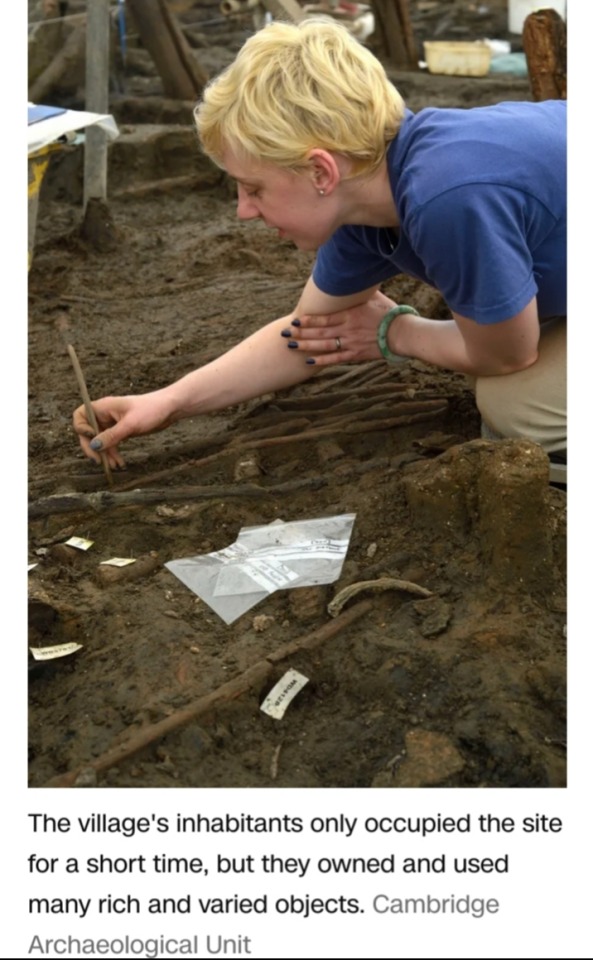
Lab analysis of biological remains revealed the types of food the community once consumed.
A pottery bowl imprinted with the finger marks of its maker held a final meal — a wheat grain porridge mixed with animal fat.
Chemical analyses of the bowls and jars showed traces of honey along with deer, suggesting the people who used the dishes might have enjoyed honey-glazed venison.
Ancient excrement found in waste piles below where the houses would have stood showed that the community kept dogs that fed on scraps from their owners’ meals.
And human fossilized poop, or coprolites, showed that at least some inhabitants suffered from intestinal worms.
The waste piles, or middens, were one line of evidence that showed how long the site was occupied, with a thin layer of refuse suggesting the settlement was built nine months to a year before it went up in flames.
"Two other factors supported that line of reasoning," Wakefield said.
“The second was that a lot of the wood that was used in the construction was unseasoned, it was still effectively green, it hadn’t been long in position,” he said.
“The third one is that we have a lack of the kind of insects and animals that are associated with human habitation."
"It wouldn’t be long before beetles would worm (in) … but there’s no evidence of any of that in any of the 18,000 plus timbers.”
The fact that the site, with its rich and varied contents, was in use for only a year upended the team’s preconceived “visions of everyday life” in the ninth century BC.
It may suggest that Bronze Age societies were perhaps less hierarchical than traditionally thought, according to the 1,608-page report.
“We are seeing here not the accumulation of a lifetime, but just a year’s worth of materials,” the authors noted in the report.
“It suggests that artefacts such as bronze tools and glass beads were more common than we often imagine and that their availability may not in fact have been restricted.”
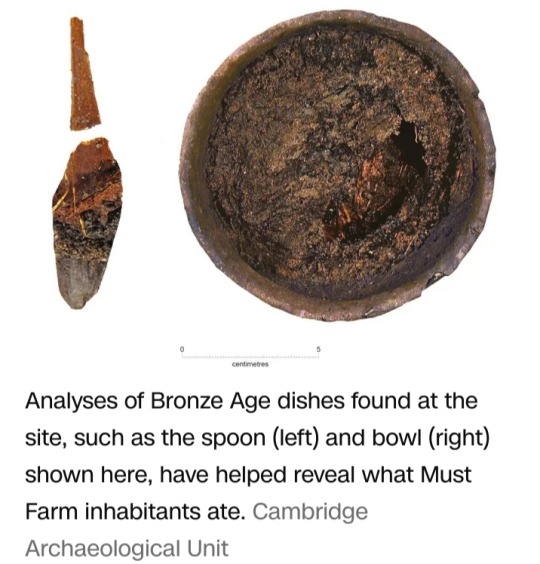
#Must Farm#Late Bronze Age#Late Bronze Age Britain#Cambridgeshire#Peterborough#archaeological nirvana#Pompeii premise#Mount Vesuvius#AD 79#Bronze Age#Chris Wakefield#Cambridge Archaeological Unit#University of Cambridge#9th century BC#Britain's Pompeii#archaeology#archaeologists#ceramic artifacts#wooden artifacts#forensic fire investigator#archaeological site#Institute of Archaeology#University College London#Peterborough Museum and Art Gallery#artefacts#Mike Parker Pearson#history
4 notes
·
View notes
Text


~ Model of a chariot drawn by a horse driven by two men.
Period: Late Bronze III
Place of origin: Ras Shamra = Ugarit (Western Lower Town, Tr. Banquette, pt 40)
Medium: Earthenware (yellow, white and brown glaze).
#ancient#ancient art#history#museum#archeology#ancient sculpture#ancient history#archaeology#bronze age#model of a chariot#late bronze III#ras shamra
1K notes
·
View notes
Text

208 notes
·
View notes
Text
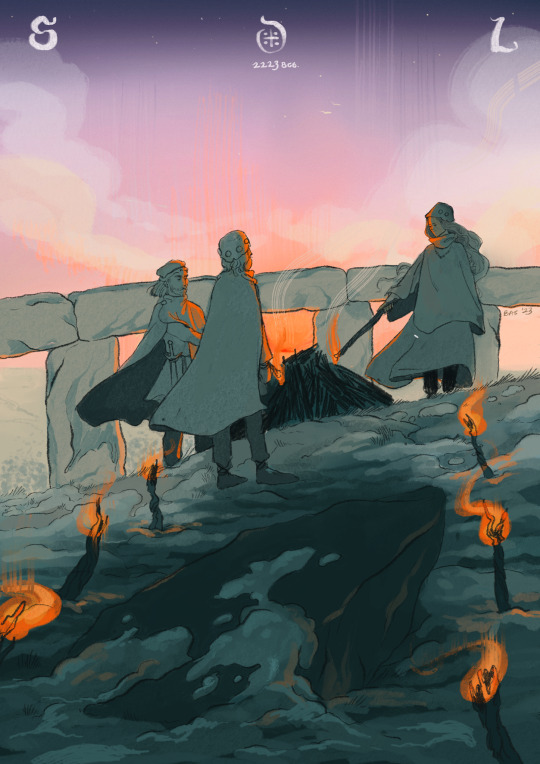
sundown at solstice (2223BCE)
merry midwinter folks!!
#winter solstice#oc art#stonehenge#folk art#the chief#chief’s life and lore#digital illustration#artists on tumblr#original comic#the lonely barrow#celtic folklore#bronze age#early bronze age#late Neolithic#happy solstice
121 notes
·
View notes
Text
Irish dress history sources online:
A list of sources for Irish dress history research that free to access on the internet:
Primary and period sources:
Text Sources:
Corpus of Electronic Texts (CELT): a database of historical texts from or about Ireland. Most have both their original text and, where applicable, an English translation. Authors include: Francisco de Cuellar, Luke Gernon, John Dymmok, Thomas Gainsford, Fynes Moryson, Edmund Spenser, Laurent Vital, Tadhg Dall Ó hUiginn
Images:
The Edwin Rae Collection: A collection of photographs of Irish carvings dating 1300-1600 taken by art historian Edwin Rae in the mid-20th c. Includes tomb effigies and other figural art.
National Library of Ireland: Has a nice collection of 18th-20th c. Irish art and photographs. Search their catalog or browse their flickr.
Irish Script on Screen: A collection of scans of medieval Irish manuscripts, including The Book of Ballymote.
The Book of Kells: Scans of the whole thing.
The Image of Irelande, with a Discoverie of Woodkarne by John Derricke published 1581. A piece of anti-Irish propaganda that should be used with caution. Illustrations. Complete text.
Secondary sources:
Irish History from Contemporary Sources (1509-1610) by Constantia Maxwell published 1923. Contains a nice collection of primary source quotes, but it sometimes modernizes the 16th c. English in ways that are detrimental to the accuracy, like changing 'cote' to 'coat'. The original text for many of them can be found on CELT, archive.org, or google books.
An Historical Essay on the Dress of the Ancient and Modern Irish By Joseph Cooper Walker published 1788. Makes admirable use of primary sources, but because of Walker's assumption that Irish dress didn't change for the entirety of the Middle Ages, it is significantly flawed in a lot of its conclusions. Mostly only useful now for historiography. I discussed the images in this book here.
Chapter 18: Dress and Personal Adornment from A Smaller Social History of Ancient Ireland by P. W. Joyce published 1906. Suffers from similar problems to An Historical Essay on the Dress of the Ancient and Modern Irish.
Consumption and Material Culture in Sixteenth-Century Ireland Susan Flavin's 2011 doctoral thesis. A valuable source on the kinds of materials that were available in 16th c Ireland.
A Descriptive Catalogue of the Antiquities in the Museum of the Royal Irish Academy Volumes 1 and 2 by William Wilde, published 1863. Obviously outdated, and some of Wilde's conclusions are wrong, because archaeologists didn't know how to date things in the 19th century, but his descriptions of the individual artifacts are worthwhile. Frustratingly, this is still the best catalog available to the public for the National Museum of Ireland Archaeology. Idk why the NMI doesn't have an online catalog, a lot museums do nowadays.
Volume I: Articles of stone, earthen, vegetable and animal materials; and of copper and bronze
Volume 2: A Descriptive Catalogue of the Antiquities of Gold in the Museum of the Royal Irish Academy
A Horsehair Woven Band from County Antrim, Ireland: Clues to the
Past from a Later Bronze Age Masterwork by Elizabeth Wincott Heckett 1998
Jewellery, art and symbolism in Medieval Irish society by Mary Deevy in Art and Symbolism in Medieval Europe- Papers of the 'Medieval Europe Brugge 1997' Conference (page 77 of PDF)
Looking the part: dress and civic status and ethnicity in early-modern Ireland by Brid McGrath 2018
Irish Mantles, English Nationalism: Apparel and National Identity in Early Modern English and Irish Texts by John R Ziegler 2013
Dress and ornament in early medieval Ireland - exploring the evidence by Maureen Doyle 2014
Dress and accessories in the early Irish tale, ‘The Wooing of Becfhola’ by Niamh Whitfield 2006
A tenth century cloth from Bogstown Co. Meath by Elizabeth Wincott Heckett 2004
Tertiary Sources:
Medieval Ireland: An Encyclopedia edited by Sean Duffy published 2005
Re-Examining the Evidence: A Study of Medieval Irish Women's Dress from 750 to 900 CE by Alexandra McConnell
#resources#dress history#irish dress#irish history#early medieval#bronze age#textile history#late medieval#16th century#historical dress
80 notes
·
View notes
Text
The fact that the Volturi leaders were born in the Bronze Age 🤯
#the late Mycenaean period which was followed by the Bronze Age collapse#then the dark age#then the period we know as Ancient Greece#volturi#volturi coven#the volturi coven#the volturi#aro volturi#marcus volturi#caius volturi#twilight volturi#twilight saga#twilight renaissance#twilight renewal#twilight resurgance#twilight revival
59 notes
·
View notes
Text
reread world’s finest 289 “the one where alien telepathic worms feed on bruce and clark’s emotions and then have sex and die in front of them and then they weep and embrace over the ashes of the dead telepathic worms and the last line of dialogue is literally ‘here it is warm...outside it is bitterly cold. perhaps no one else, on any world, would understand.’” and i really can’t believe no one has yet written the sex scene afterwards. or if they have i can’t find it :(
#listen i just think. that the telepathic worms. should let them sense each other's emotions for a bit...#psychic feedback sex is what i'm saying#i AM tempted to write it myself but#how make word go :l#superbat#also i'd have to track down late bronze age continuity for bruceman rip
148 notes
·
View notes
Text

Them <333
The Brave and the Bold #184
#i love it when there's an emotional aspect to their relationship#too many writers write their relationship as purely transactional#bruce gets information and protection from gordon#and gordon gets criminals off the streets#you can tell they definitely like what they get from each other#but do they actually like each other?#are they actually friends or just coworkers?#i live for moments like these where the writer is brave enough to show that they truly care for one another#where they are shown to trust each other and feel comfortable around each other enough to show emotion and vulnerability#in general i think their relationship was at it's best around this time during late bronze age#nearly every issue during the hamilton hill mayor saga was like:#gordon: i'm no longer commissioner ):#bruce *pulling him close*: YOU'RE THE COMMISSIONER OF MY HEART!!
20 notes
·
View notes
Text
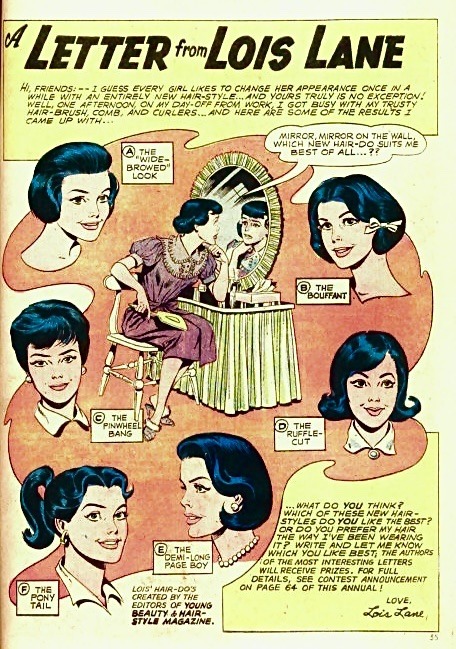
The 1962 Superman's Girl Friend, Lois Lane Annual 1 had a competition for Lois's new hairstyle (which they waiting another 5 years before integrating). This came after decades of her wearing her hair the same way in basically every issue since her conception (occasionally changed for fancy in-story events, and gradually shortening through the golden/silver age transition). After years of constant letters to editor complaining about her "old fashioned" and "stagnant" look, they put it to a vote...
The one they went with back then (after 5 more years of her classic look):
This was the first page of her new look in Superman's Girl Friend, Lois Lane #75 (July 1967), and some other examples from Kurt Schaffenburger (resident Lois artist):





And here are some other artist's interpretations of her base style in the years that followed!



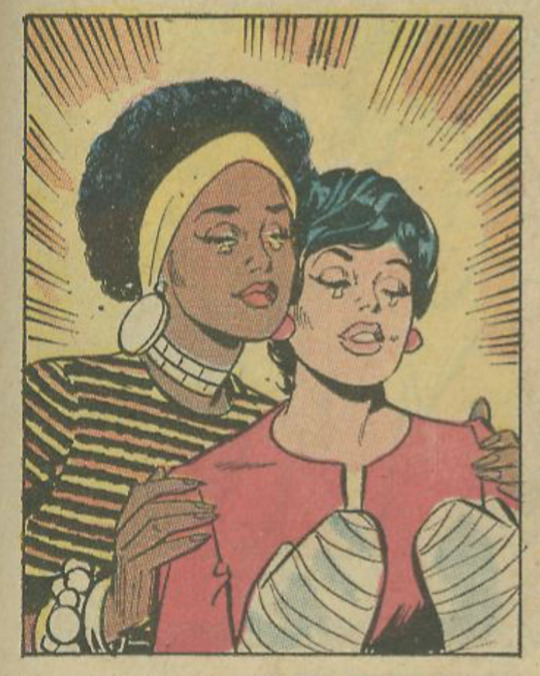
#personally I LOVE the pony tail look and think it really would have fit her personality too#I do really like the pinwheel as well and they did give her a similar style in the late 80s/early 90s!#dc comics#superman#lois lane#superman's girlfriend lois lane#silver age dc#bronze age dc
34 notes
·
View notes
Text

Pov: I am a late bronze age peasant who needs grain but my city just got raided by foreigners
#late bronze age collapse#is that a tag?#palace economy#history memes#i'm sorry#archeology#this is a shitpost
8 notes
·
View notes
Text
ANCIENT EGYPTIAN NATIONAL SECURITY SLOGAN:
If you sea people, sea something
12 notes
·
View notes
Photo


A CYPRIOT PICROLITE FIGURE
CHALCOLITHIC PERIOD, CIRCA LATE 4TH-EARLY 3RD MILLENNIUM B.C.
1 1⁄2 in. (3.8 cm.) high.
#A Cypriot Picrolite Figure#chalcolithic period circa late 4th-early 3rd millennium b.c.#bronze age#archeology#archeolgst#ancient artifacts#history#history news#ancient history#ancient culture#ancient civilizations#ancient cyprus
40 notes
·
View notes
Text
people irl will say “haha you know so much about Greece!” And I’m honoured they think so but that is not true.
#Once Christianity gains traction my knowledge trickles out until it’s a puddle in a dried up riverbed.#My special interest is religion and culture and its diffusion-#-in the Mediterranean and adjacent regions from the Bronze Age to mid-late antiquity.#And it primarily revolves around Greece because they were major players who wrote a lot. And I really love Dionysos#That is not equivalent to knowing about Greece when almost 2000 years is like crumbs of a bigger cake in my mind#I’m also a highschooler. Going into the arts. I am not a classicist
2 notes
·
View notes